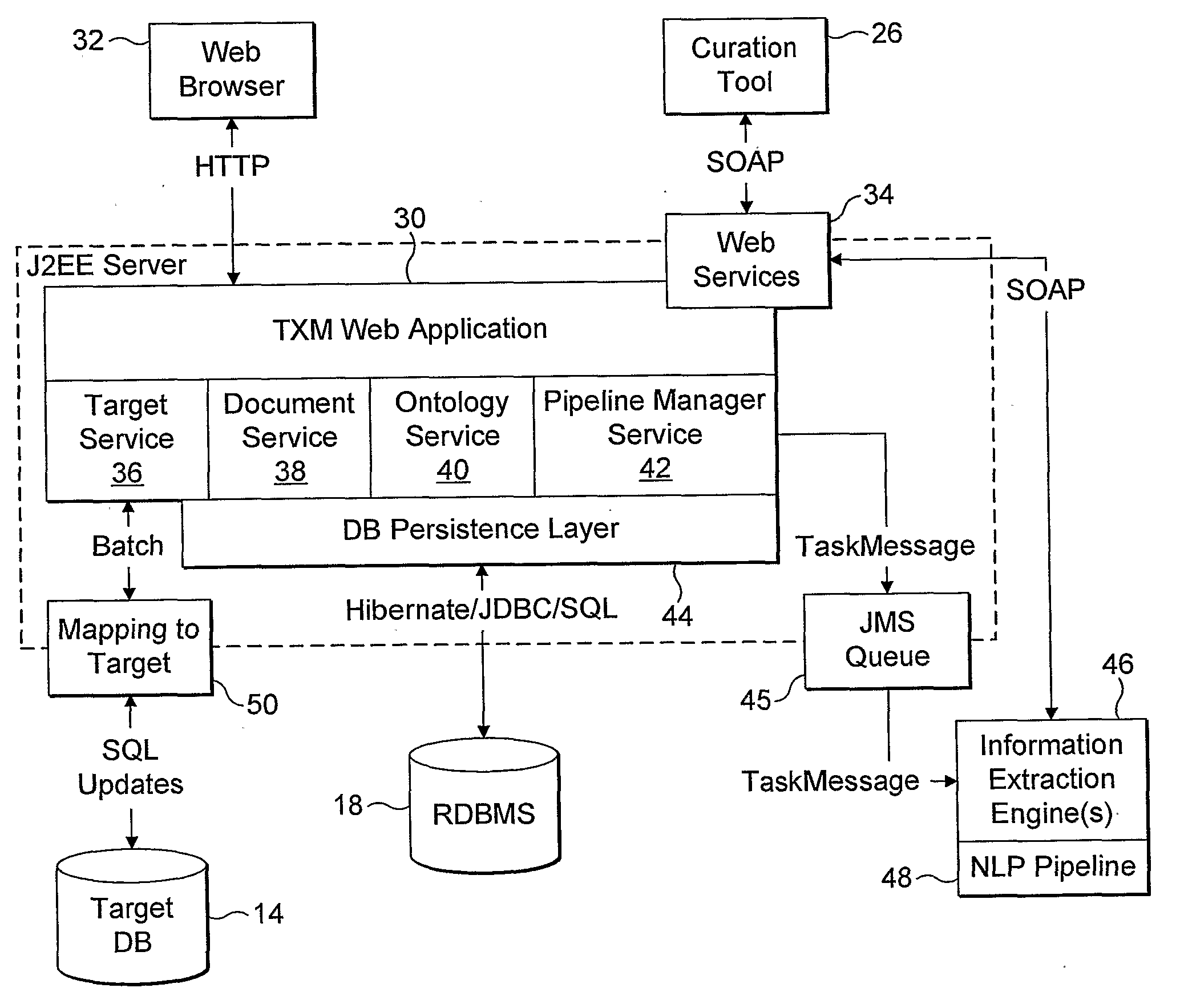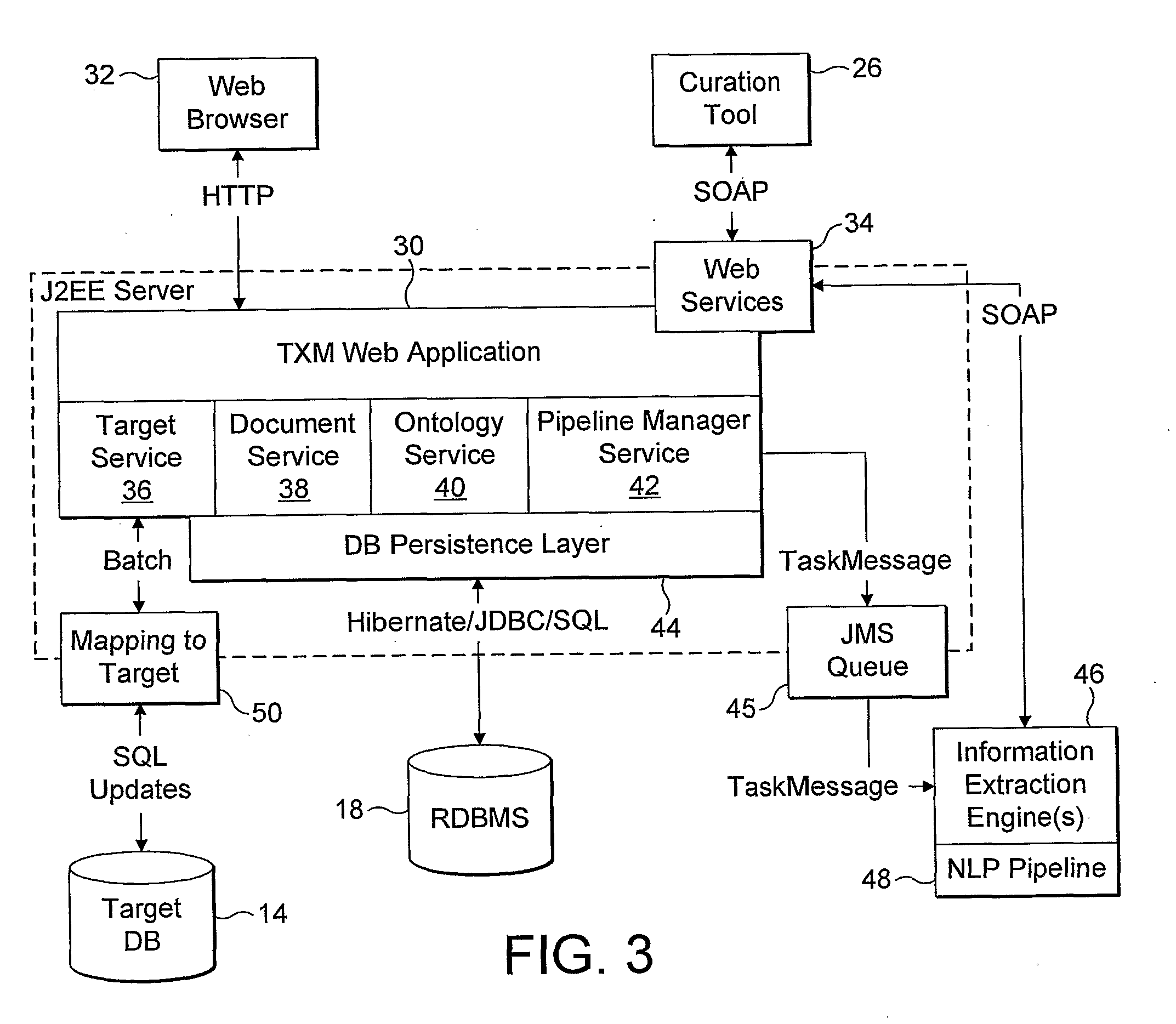Information Extraction Methods and Apparatus Including a Computer-User Interface
a computer-user interface and information extraction technology, applied in the field of information extraction, can solve the problems of inability to automate information processing tasks, inability to accurately determine the content of documents comprising natural language text, and the difficulty of finding and analysing information, so as to facilitate the curator, improve the speed of work, and accurately determine the
- Summary
- Abstract
- Description
- Claims
- Application Information
AI Technical Summary
Benefits of technology
Problems solved by technology
Method used
Image
Examples
example document
[0200]FIG. 6 is an example of a document suitable for processing by the system. FIG. 7 is an XML file of the same document included within the title and body tags of an XML file suitable for processing by the system. The body of the text is provided in plain text format within body tags. FIGS. 8A, 8B, 8C and 8D are successive portions of an annotated XML file concerning the example document after information extraction by the procedure described above.
[0201]The annotated XML file includes tags concerning instances of entities 200 (constituting annotation entity data). Each tag specifies a reference number for the instance of an entity (e.g. ent id=“e4”), the type of the entity (e.g. type=“protein”), the confidence of the term normalisation as a percentage (e.g. conf=“100”) and a reference to ontology data concerning that entity, in the form of a URI (e.g. norm=http: / / www.cognia.com / txm / biomedical / #protein_P00502885). (The reference to ontology data concerning that entity constitutes...
PUM
 Login to View More
Login to View More Abstract
Description
Claims
Application Information
 Login to View More
Login to View More - R&D
- Intellectual Property
- Life Sciences
- Materials
- Tech Scout
- Unparalleled Data Quality
- Higher Quality Content
- 60% Fewer Hallucinations
Browse by: Latest US Patents, China's latest patents, Technical Efficacy Thesaurus, Application Domain, Technology Topic, Popular Technical Reports.
© 2025 PatSnap. All rights reserved.Legal|Privacy policy|Modern Slavery Act Transparency Statement|Sitemap|About US| Contact US: help@patsnap.com



